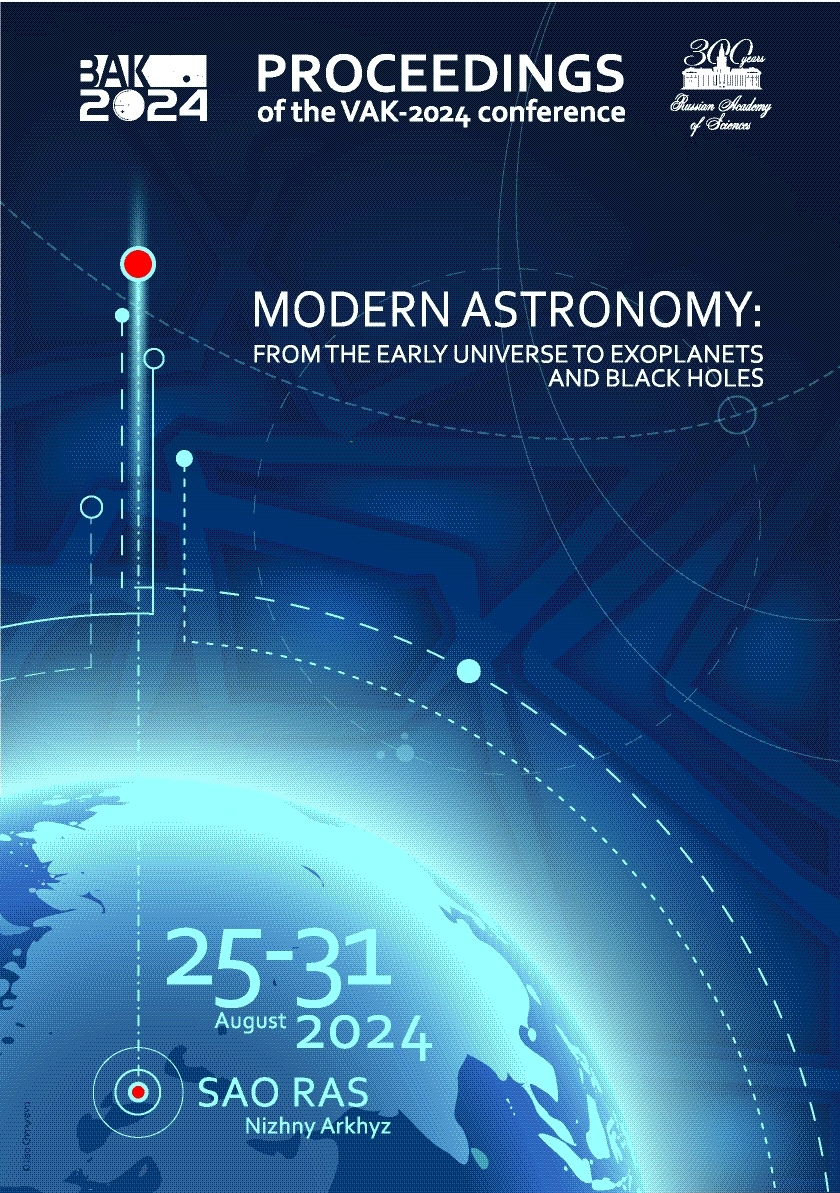UDC 52
UDC 53
UDC 520
UDC 521
UDC 523
UDC 524
UDC 52-1
UDC 52-6
CSCSTI 41.00
CSCSTI 29.35
CSCSTI 29.31
CSCSTI 29.33
CSCSTI 29.27
CSCSTI 29.05
Russian Classification of Professions by Education 03.06.01
Russian Classification of Professions by Education 03.05.01
Russian Classification of Professions by Education 03.04.03
Russian Library and Bibliographic Classification 2
Russian Library and Bibliographic Classification 223
Russian Trade and Bibliographic Classification 614
Russian Trade and Bibliographic Classification 6135
BISAC SCI004000 Astronomy
BISAC SCI005000 Physics / Astrophysics
Globular clusters (GCs) are the oldest (ages up to 13.6 Gyr), but not the most metal-poor ( -2.9<[Fe/H]<0 dex) objects in the Universe. Studying properties of their stellar populations and comparing them with the properties of structural components of galaxies and stellar streams is necessary to understand the processes of nucleosynthesis and galaxy formation. We analyse integrated-light (IL) spectra of extragalactic GCs in order to determine the properties of their horizontal branch stars, ages and chemical composition. For this purpose, we compare the observed and synthetic spectra of clusters calculated using stellar atmosphere models. In this paper, we address the questions: 1) what signatures of multiple stellar populations can be inferred from the analysis of IL low-resolution spectra of GCs; and 2) what the origin of GCs is and their multiple stellar populations. For the second question, we consider only two sources of multiple stellar populations: asymptotic giant branch and rapidly rotating massive stars, and briefly consider the problems in this scientific area.
galaxies: abundances; galaxies: star clusters: general
1. Acharova I., Sharina M., and Kazakov E., 2022, Monthly Notices of the Royal Astronomical Society, 511, p. 800
2. Beasley M., Leaman R., Gallart C., et al., 2019, Monthly Notices of the Royal Astronomical Society, 487, p. 1986
3. Bertelli G., Girardi L., Marigo P., and Nasi E., 2008, Astronomy and Astrophysics, 484, p. 815
4. Carretta E., Bragaglia A., Gratton R., et al., 2010, Astronomy and Astrophysics, 516, p. 55
5. Gieles M. and Gnedin O., 2023, Monthly Notices of the Royal Astronomical Society, 522, p. 5340
6. Kraft R., 1994, Publications of the Astronomical Society of the Pacific, 106, p. 553
7. Lagioia E., Milone A., Legnardi M., et al., 2024, Astrophysical Journal, Submitted, arXiv:2406.16824
8. Larsen S., Eitner P., Magg E., et al., 2022, Astronomy and Astrophysics, 660, p. 88
9. Larsen S., Romanowsky A., Brodie J., and Wasserman A., 2020, Science, 370, p. 970
10. Lee H., Yoon S., and Lee Y., 2000, Astrophysical Journal, 120, p. 998
11. Milone A. and Marino A., 2022, Universe, 8, p. 359
12. Salpeter E., 1955, Astrophysical Journal, 121, p. 161
13. Sanati M., Jeanquartier F., Revaz Y., and Jablonka P., 2023, Astronomy and Astrophysics, 669, p. 94
14. Scalco M., Gerasimov R., Bedin L., et al., 2024, Astronomische Nachrichten, 345, p. 40018
15. Shapiro K., Genzel R., and Forster S., 2010, Monthly Notices of the Royal Astronomical Society (Letters), 403, p. 36
16. Sharina M., Maricheva M., Kniazev A., et al., 2024, Monthly Notices of the Royal Astronomical Society, 528, p. 7165
17. Sharina M., Shimansky V., and Shimanskaya N., 2020, Astrophysical Bulletin, 75, p. 247
18. Simon J., 2019, Annual Review of Astronomy and Astrophysics, 57, p. 375
19. Weidemann V., 2000, Astronomy and Astrophysics, 363, p. 647
20. Winter A. and Clarke C., 2023, Monthly Notices of the Royal Astronomical Society, 521, p. 1646





